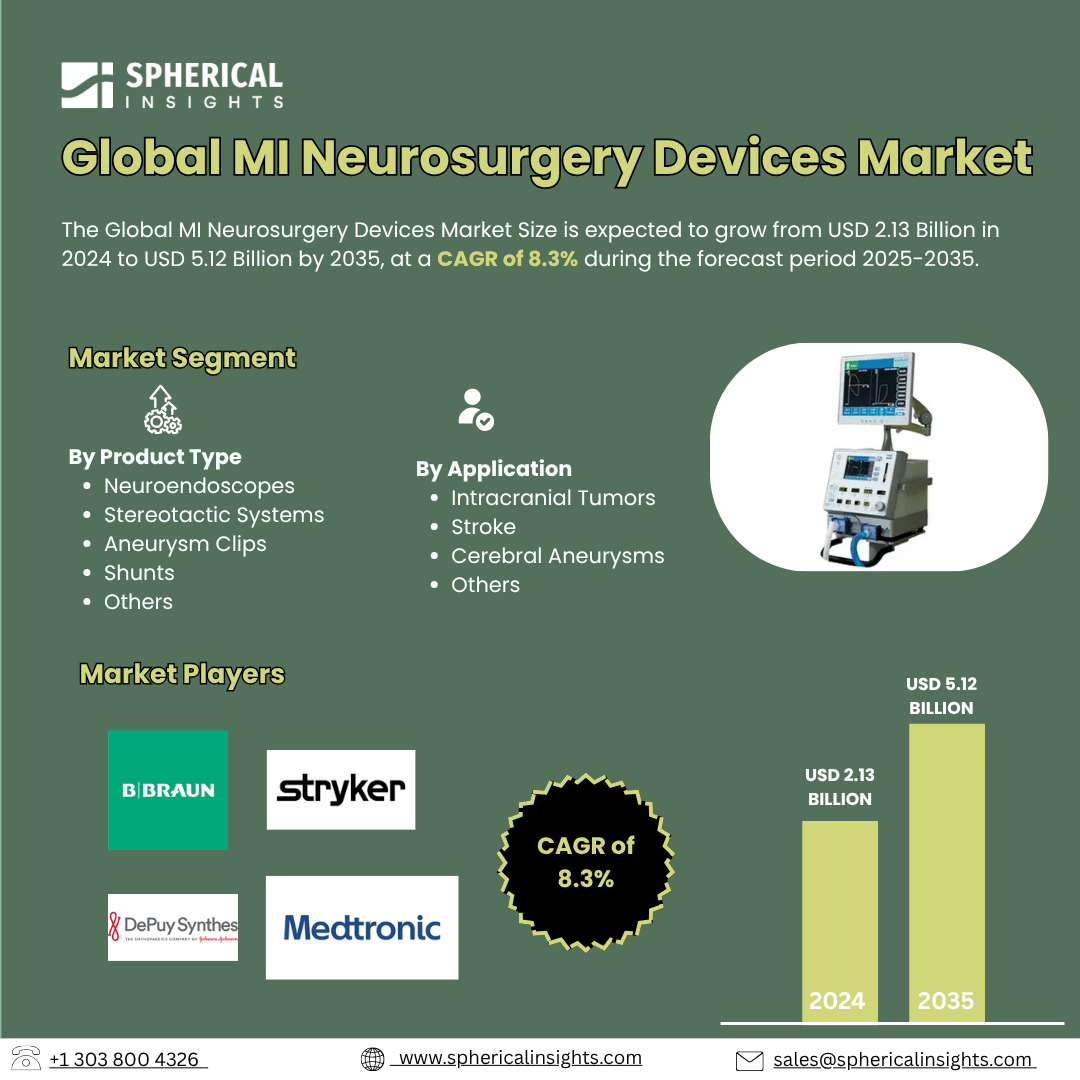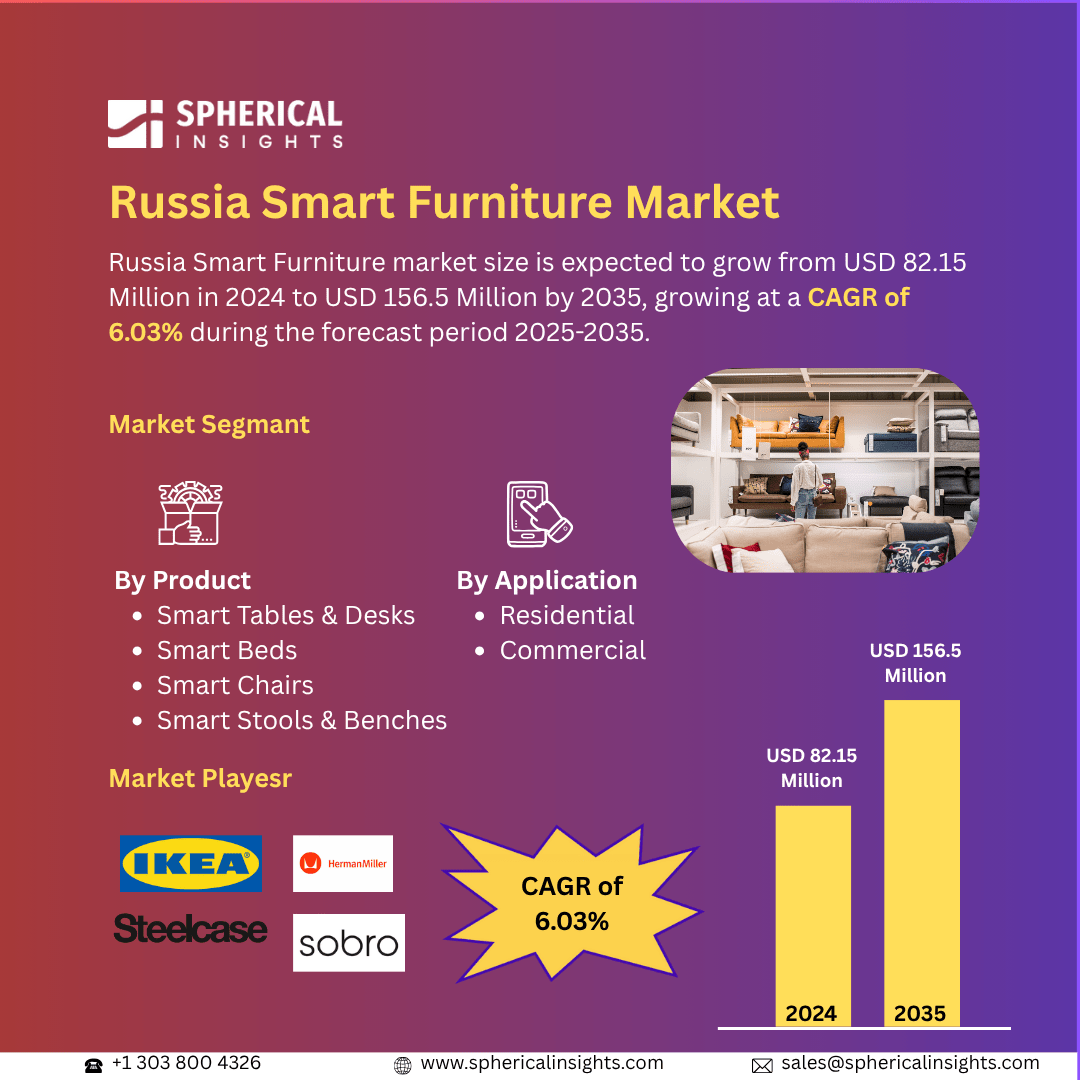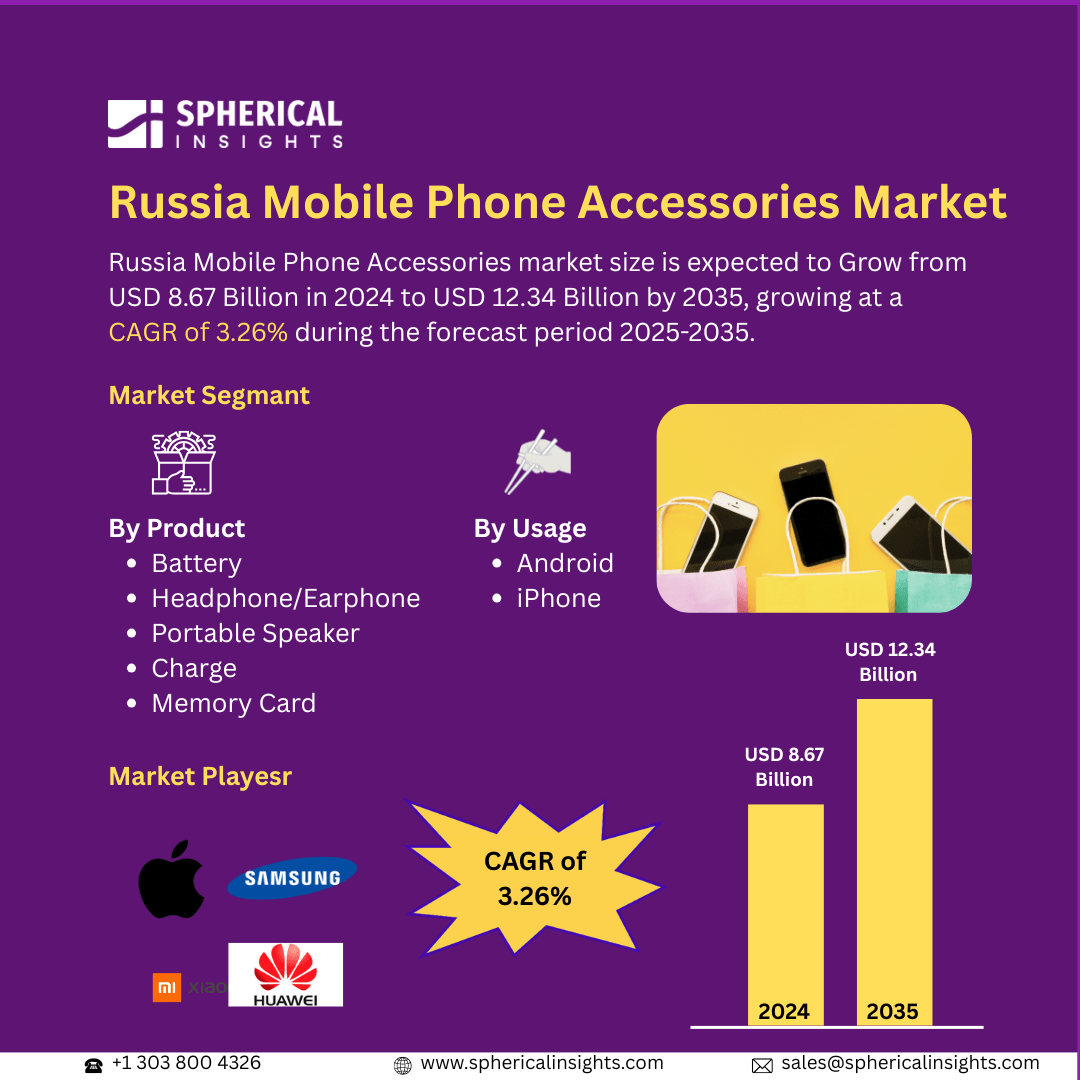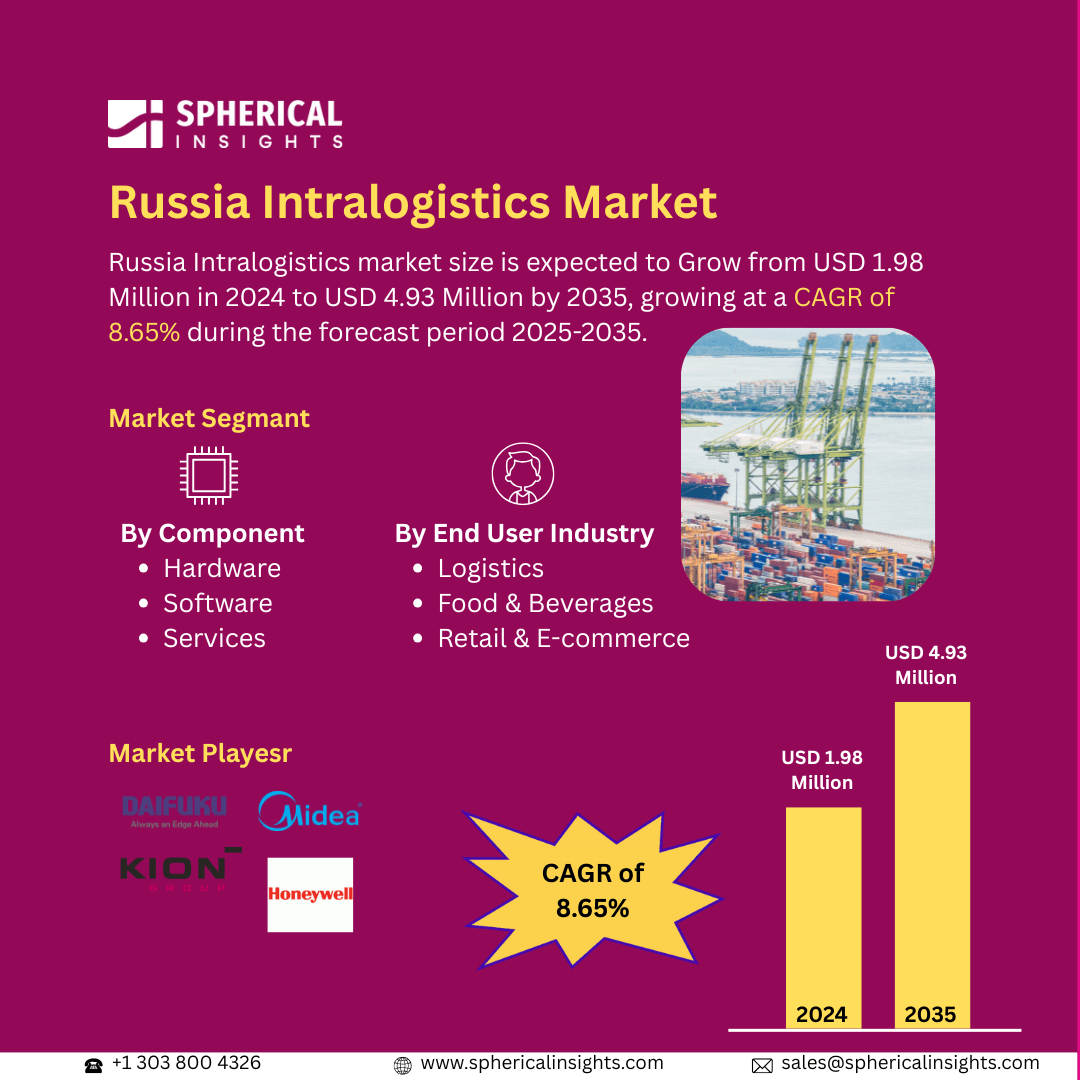Global MI Neurosurgery Devices Market Insights Forecasts to 2035
- The Global MI Neurosurgery Devices Market Size Was Estimated at USD 2.13 Billion in 2024
- The Market Size is Expected to Grow at a CAGR of around 8.3% from 2025 to 2035
- The Worldwide MI Neurosurgery Devices Market Size is Expected to Reach USD 5.12 Billion by 2035
- Asia Pacific is expected to grow the fastest during the forecast period.
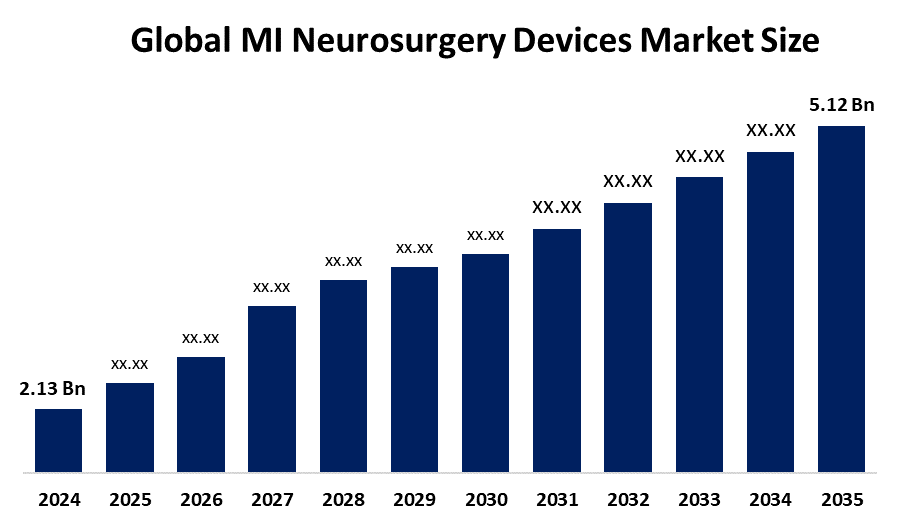
MI Neurosurgery Devices Market
Neurosurgery is much higher than brain surgery and involves the medical characteristics of diagnosis and treatment of patients undergoing nerve health issues. Neurosurgery includes the healing processes of the spinal and peripheral nerves in the body. These surgeries can be performed on all age groups, and expertise for different levels and equipment are used for different age groups. Depending on the degree of damage, it is decided whether to do surgery or not. Neurosurgery can be aggressive. For example, in cases such as brain tumors, the skull has to be broken, and then the tumor has to be removed. In cases of aggressive surgery, recovery time can be long, and it can also be painful for the patient. Additionally, the patient may die in such cases. The minimally invasive neurosurgical devices market is mainly operated by it. To reduce the degree of pain after surgery and increase the possibility of survival, it is important to come with a low-aggressive approach to neurosurgery where the patient will at least suffer.
Attractive Opportunities in the MI Neurosurgery Devices Market
- Surgeons can plan and perform with greater precision thanks to technological convergence that combines real-time imaging, artificial intelligence, and sophisticated navigation, increasing the indications for MI and enabling premium pricing.
- Compact, integrated systems and disposable endoscopic attachments with recurring income are preferred when procedures are moved to high-throughput settings (hybrid ORs, specialised neuro suites, and specific ambulatory centres).
- As neurosurgical capacity, training programmes, and finance improve, emerging-market adoption is speeding up in Asia-Pacific, the Middle East, and portions of Africa. This opens up new markets for suppliers with strong service and education models.
Global MI Neurosurgery Devices Market Dynamics
DRIVER: The rise in neurological disorders
Parkinson's disease, epilepsy, brain tumours, and other conditions are becoming more common as the number of elderly people rises. In addition to recovering more slowly, elderly people have a lower pain threshold. Good insurance coverage has made these operations affordable, and reimbursement policies have improved. These operations are also preferred by patients due to their improved recovery and less pain. The market for minimally invasive neurosurgical devices is growing as a result of increased awareness of neurological illnesses and treatment options.
RESTRAINT: High costs
Minimally invasive neurosurgeries require high-quality equipment with better precision. Since these surgeries involve the least damage to the patient, trained experts in this field must perform the surgeries. As the trained experts also charge a lot for these surgeries, the overall cost of the surgeries is high. However, there are fewer costs post-surgery, and it pretty much cancels out the high surgery costs. There is a shortage of trained and skilled professionals, and this might affect patients in rural areas where medical care is not as developed.
OPPORTUNITY: Developed neural healthcare
Advanced imaging and operating techniques are used in the market for minimally invasive neurosurgical equipment. Businesses that want to expand in this area have lots of chances to carry out in-depth research and development in order to create machines and equipment that are more reasonably priced. Because of this, neurosurgeries may become more affordable for the underprivileged. The government can enact laws to lower the cost of these procedures for the majority of the impoverished. Patients need to use fewer medications because these operations shorten healing periods.
CHALLENGES: Training, workflow integration, and evidence generation
MI neuro requires intensive simulation and steep learning curves; without vendor-backed training, adoption is difficult for under-resourced centres. Interoperability issues may arise when software, images, and instrumentation are integrated across several OEMs. Manufacturers must present empirical data demonstrating fewer problems and shorter stays in addition to technical specifications, in order to win tenders.
Global MI Neurosurgery Devices Market Ecosystem Analysis
The ecosystem includes platform OEMs (navigation, microscopes, endoscopes, drills), integrators/distributors catering to hospitals and specialty centres, and component providers (optics, sensors, robots). Endoscopy platforms are provided by well-known neuro OEMs and inventors receiving FDA clearances; leading microscope manufacturers include Carl Zeiss Meditec and Leica; and important navigation and OR-integration suppliers include Medtronic.
Based on the product type, the neuroendoscopes segment led the market with the leading revenue share over the forecast period
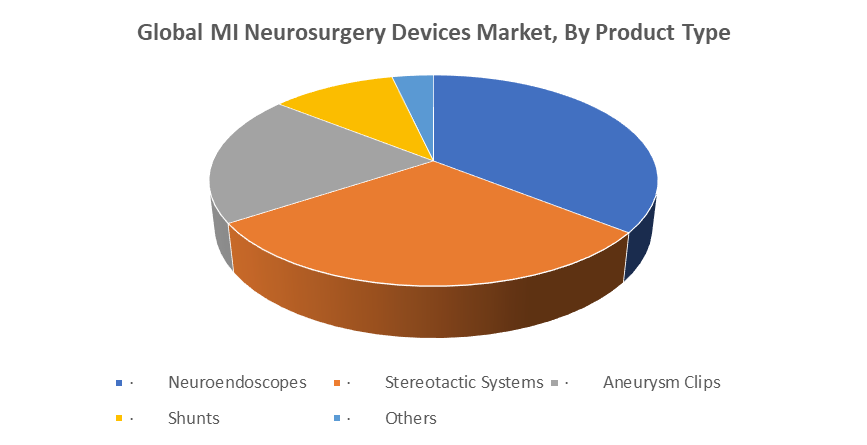
The segment dominance is driven by their capacity to carry out minimally invasive surgeries, which will shorten hospital stays and recuperation times for patients. When treating cerebral aneurysms and intracranial tumours, where accuracy is crucial, these instruments are especially helpful.
Based on the application, the intracranial tumors segment led the market with the major revenue share during the forecast period
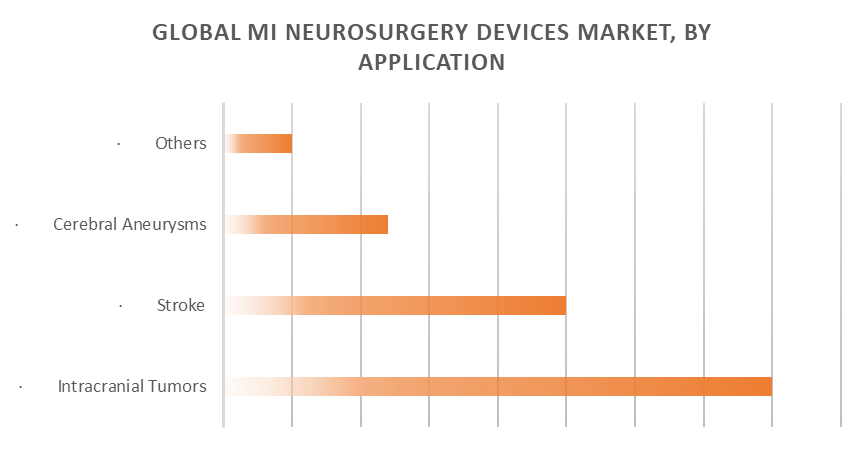
The intracranial tumors segment led the market, holding the largest revenue share during the forecast period. The significant need for accurate and minimally invasive surgical procedures. In order to remove tumours precisely while causing the least amount of damage to the surrounding brain tissue, MI neurosurgery tools like neuroendoscopes and stereotactic systems are crucial. The demand in this market is being driven by improvements in diagnostic imaging and the rising prevalence of brain tumours.
North America is anticipated to hold the largest market share of the MI neurosurgery devices market during the forecast period
North America is anticipated to hold the largest market share in the MI neurosurgery devices market during the forecast period. The high healthcare costs, a substantial prevalence of neurological illnesses, and an advanced healthcare infrastructure. The use of MI neurosurgical devices has expanded as a result of the U.S. government's increasing financing for neurology and neurosurgery research and development. The region's supremacy is also influenced by the existence of significant market players and ongoing technical developments.
Asia Pacific is expected to grow at the fastest CAGR in the MI neurosurgery devices market during the forecast period
Asia Pacific is expected to grow at the fastest CAGR in the MI neurosurgery devices market during the forecast period. Rising demand for minimally invasive surgical treatments, growing awareness of neurological illnesses, and the quick development of healthcare infrastructure are the main drivers of this increase. Nations like China, India, and Japan are making significant investments in improving healthcare and developing their neurosurgical skills. The expansion of the middle class and rising healthcare costs in the area are also driving the market's expansion.
Recent Development
- In September 2024, Stryker Corporation completed the acquisition of NICO Corporation, bolstering its portfolio in minimally invasive brain tumor and intracerebral hemorrhage (stroke) surgery tools like BrainPath and Myriad.
- In April 2024, Medtronic issued a Stealth Station S8 software advisory/recall notice addressing a navigation display text issue, highlighting the importance of software reliability in navigation platforms.
Key Market Players
KEY PLAYERS IN THE MI NEUROSURGERY DEVICES MARKET INCLUDE
- Medtronic Plc
- Stryker Corporation
- Johnson & Johnson (DePuy Synthes)
- B. Braun Melsungen AG
- Integra LifeSciences Holdings Corporation
- Zimmer Biomet Holdings, Inc.
- Boston Scientific Corporation
- Smith & Nephew plc
- Abbott Laboratories
- Penumbra, Inc.
- MicroPort Scientific Corporation
- Karl Storz GmbH & Co. KG
- NICO Corporation
- NeuroPace, Inc.
- Others
Market Segment
This study forecasts revenue at global, regional, and country levels from 2020 to 2035. Spherical Insights has segmented the MI neurosurgery devices market based on the below-mentioned segments:
Global MI Neurosurgery Devices Market, By Product Type
- Neuroendoscopes
- Stereotactic Systems
- Aneurysm Clips
- Shunts
- Others
Global MI Neurosurgery Devices Market, By Application
- Intracranial Tumors
- Stroke
- Cerebral Aneurysms
- Others
Global MI Neurosurgery Devices Market, By Regional Analysis
- North America
- Europe
- Germany
- UK
- France
- Italy
- Spain
- Russia
- Rest of Europe
- Asia Pacific
- China
- Japan
- India
- South Korea
- Australia
- Rest of Asia Pacific
- South America
- Brazil
- Argentina
- Rest of South America
- Middle East & Africa
- UAE
- Saudi Arabia
- Qatar
- South Africa
- Rest of the Middle East & Africa
